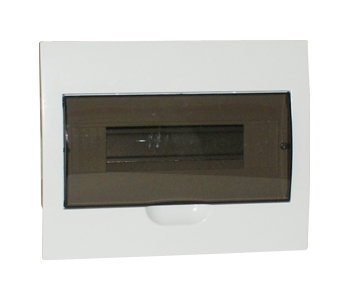All About Fluorescent Lighting by AGM Electrical Supplies

Before installing any lights, ensure they will work with the circuit and wiring in your home. A reliable electrician store such as AGM Electrical Supplies is best placed to help make this determination.Modern fluorescent lamps consist of two components, a glass tube and ballast. They work by ionizing mercury vapor to excite phosphors that produce light, while the ballast raises and limits voltage for electrodes.
How it Works
Fluorescent lights are familiar and consist of long tubes with electrodes on either end that contain low pressure mercury vapor and noble gases such as argon or neon (which help suppress chemical reactions).Electrical current energizes mercury atoms to release electrons at ultraviolet frequencies and strike phosphor coating inside of a tube; these UV rays then fluoresce in visible spectrum producing light.Fluorescent lighting differs significantly from incandescent bulbs in that its filament must heat up before lighting can start, as the electrical discharge must start quickly and reliably before being controlled to keep voltage constant over its lifespan. To do this, fluorescent lamps use a ballast circuit which must be placed outside of their respective lamp housing to achieve this feat.
Phosphors
Fluorescent tubes produce light through their phosphor coatings. When UV rays from mercury atoms hit these phosphors, they become excited and emit visible light - producing visible illumination in fluorescent tubes.Color of phosphors determines their light emission; optimal phosphors should emit in regions most sensitive to our eyes, producing white light of high quality.Calcium Halophosphate tubes have become one of the most popular choices on the market due to their ability to more than double lamp efficacy, yet triphosphor technologies are even more energy-saving and produce similar light quality; furthermore, triphosphor technologies reduce mercury release into the environment, contributing further to energy saving benefits of fluorescent lighting over traditional bulbs.
Ballasts
A fluorescent tube ballast regulates AC power to its electrodes. After starting them up at high voltage, it limits current to sustain and extend lamp's lifespan safely. This also eliminates buzzing sounds you hear during use - and helps ensure its longevity!If your lights flickering, it could be because your ballast is not preheating quickly enough. Rapid start ballasts work like preheating an oven; heating up electrodes before switching on is how these ballasts function. While it doesn't consume a great deal of energy, this method could shorten the life span of your light.nstant start ballasts don't preheat; instead they send a powerful electrical surge when you flip on the switch. These ballasts require 1.5-2 watts less electricity than rapid start models.
Fluorescent Tubes
Fluorescent lighting emit light through tubes of various lengths and diameters filled with gasses and phosphors that convert electrical energy into useful illumination more efficiently than incandescent bulbs.Fluorescent lamps use high voltage across their electrodes to produce an electric arc that illuminates and excites phosphors inside their tube, creating light that fills it. Heating up these electrodes consumes much of its power.Every start cycle of a fluorescent lamp causes it to slightly change its light intensity; this phenomenon is known as flicker, and can be avoided using electronic ballasts operating at higher frequencies. Four-foot fluorescent tubes are among the most frequently seen fixtures in buildings and office spaces, often being utilized for troffers or grid lighting applications.
LED Downlights
As opposed to fluorescents that take minutes to warm up and flicker, LEDs offer instantaneous illumination for up to 100,000 hours without flickering or dimming.Mercury-free LEDs also boast greater durability compared to fluorescent tubes and are safer for use in cleanroom and laboratory settings.Retrofit kits allow you to convert existing fluorescent fixtures to LED ones by providing new bulbs. Before doing so, however, be sure that your fixture can handle this change; check the voltage needs and circuit to be sure it can handle this change; also ensure the LED bulbs you select are compatible with dimmer switches; type B ballast-bypass LEDs require removal of an old ballast but run off line voltage with their own internal driver.
Best Selling Products
Reccent Posts
- AGM Electrical Supplies Sets a New Standard with their Advanced Circuit Breaker for Efficient Power Management
- Ensure Electrical Safety with Switchboard Accessories by AGM Electrical Safety
- All About Fluorescent Lighting by AGM Electrical Supplies
- Qualities of a Good Dimmable LED Downlight
- Clipsal Saturn Switches and Power Points











